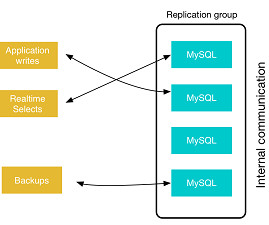Setting Up and Deploying PostgreSQL for High Availability
Percona
JULY 7, 2023
In general terms, to achieve HA in PostgreSQL, there must be: Redundancy: To ensure data redundancy and provide continuous performance when a primary server fails, multiple copies of the database reside in replica servers. When the primary server fails, a standby server takes over as the new primary.












Let's personalize your content